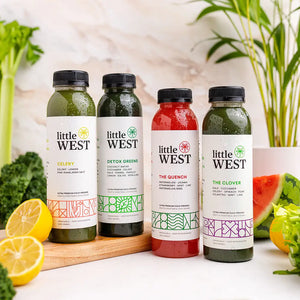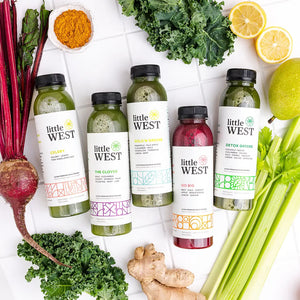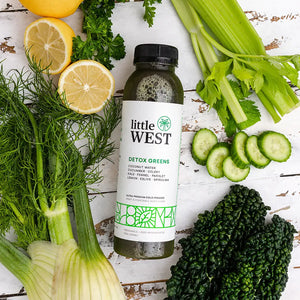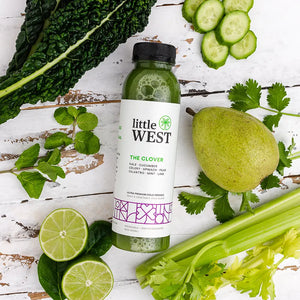5 Tips About How to Read Nutrition Labels
Published Date:
Although many people read labels just to count calories, that little square of facts offers so much more. Nutrition labels inform you about serving size, ingredients, fat, sugar, and percent daily values for nutrients like vitamins and minerals. This helps support your dietary goals and long-term health.
Food labels also do so much more than just list daily values this or that. If we look at the food labels as a whole, that also includes your ingredient list and allergen info. Food labels allow us to basically look at our food with a microscope, so to speak.
When you know how to read a nutrition label, you may be looked at as a food critic or maybe even a snob. Don’t let that bother you as looking under the hood means you’re concerned as to what you’re putting in your body - that's never ever a bad thing!
Whether you’re trying to clean up your eating habits or just maintain your current health, reading food labels can help. Here are some basic tips to keep in mind when you’re looking at the nutrition facts on the side of a package.
Tip #1. Understand Your Unique Nutritional Needs
Before starting to read the food label, understand what your body needs for peak nutrition. Are you getting enough servings of fruits and vegetables every day? Do you need more protein or more fiber? Do you have allergies, sensitivities, or dietary restrictions that mean you need to avoid certain ingredients?
Yes, you read that right. If you can’t have gluten or soy or some other ingredient, then the food label is what you need to check. You shouldn’t rely on the badges or certification manufacturers put on their packaging. Get to the nitty-gritty and just read the nutritional labels!
Some people prefer to focus on very specific nutritional goals, like eating a certain number of calories every day. One such diet that focuses on specific goals is the weight-loss or keto diet. For others, it’s easier to think about nutrition in terms of balance. That just means making sure from the food label that processed foods that are high in added sugars, preservatives, or artificial ingredients don’t dominate your daily diet.
Everyone is different. It’s the universal truth. Your nutritional needs may also change over time. However, learning how to read nutrition labels can help you get more of the, surprise surprise, nutrients you need -- and less of what you don’t.
Tip #2. Read the Ingredients List

The ingredients list is arguably the most important part of any food label. After all, this is what you’re actually putting in your body! Don’t just focus on that little white box on the packaging because here’s where we get down to business. If you only have time to look at one part of the nutrition label, make it the ingredients list.
On a food label, the product ingredients are listed in descending order from highest to lowest quantity. In other words, the first item listed is the bulk of the product. There’s a higher percentage of the first ingredient than any other ingredient listed.
When it comes to juices, the ingredients list reveals the quality of the product. For example, if the first ingredient listed on a juice’s food label is “water,” it means you’re drinking low-quality juice. The product may be using concentrates rather than 100% pure juice. Some juice companies also include added sugars, artificial sweeteners, coloring, and chemical preservatives. If they’re sneaking these unnatural ingredients into their product, you’ll find it in the ingredients list.
At Little West, we like to keep it simple. We never water down our juices or add any sugars or sweeteners. We also never use preservatives, concentrates, or anything artificial in our cold-pressed juices. If you doubt that claim, good thing you now know how to read a nutrition label! Then you can see from our food label that it’s all good!
Tip #3. Note the Serving Size
The serving size is listed at the top of the food label. This indicates how many servings the package contains. Although many foods and beverages only contain one serving, other items may have multiple servings per container.
Serving size is something that most of us consumers forget! You may be shocked next time you break open that pack of frozen french fries or frozen nuggets. So, yes, serving size is something you should consider and try to understand when learning how to read a nutrition label.
One thing people often forget about serving size is that it’s a daily serving recommendation! That’s most often the case with most instructions. A serving on a food label covers the allowed amount per day - not per meal.
Be mindful about how much you’re eating or drinking when you consume packaged items. If you have more than one serving, you’ll need to multiply the calories, percent daily value, sugar content, or other numbers that’s indicated on the food label.
Tip #4. Learn the Difference Between Total Sugars & Added Sugars
Did you know Total Sugars and Added Sugars are different? "Total Sugars" includes sugars that occur naturally in the ingredients. That’s why you may notice that your carton of oat milk has sugar content even though the ingredient list doesn’t indicate any. So, again, that’s just the naturally-occurring sugars from the ingredients!
"Added Sugars" refers to sugars, syrups, or other sweeteners that have been added separately. Some fruit or veggie juices may try to fool you with fancy marketing verbiage. If you see that their food label has some added sugars, that means it’s not the naturally-occurring kind! Most of the time, you’ll see added sugars in pre-made coffee or regular soda.
Let’s break it down for those learning how to read a nutrition label. If a product has 10g of Total Sugars but 0g of Added Sugars, it means the sugars are present in natural ingredients like fruit.
If you’re monitoring your sugar intake for health reasons, learn how to read nutrition labels for Total Sugars vs. Added Sugars. This will help you understand what kind of sugars or artificial sweeteners you’re consuming.
Also Read - Guide To A Low Sugar Juice Cleanse
Tip #5. Understand Percent Daily Value (%DV)
As you learn how to read a nutrition label, you’ll notice “% Daily Value” (%DV) on the right-hand column. The %DV is based on an average 2000 calorie diet. This gives you a general indication of the nutritional content of the food or beverage even if your own caloric intake is different.
If the %DV of a nutrient on a food label says that it is around 5% or lower, it means the product is low in that nutrient. A nutrient-rich amount is considered to be in the 20% or above range. When there is no %DV for a specific nutrient, it means the nutrient doesn’t have an established daily requirement.
%DV on a food label provides an overall picture of your diet. It can also help you focus on specific food goals. For example, if you’re trying to add more fiber to your diet, looking at the %DV on nutrition labels can help you choose high-fiber options.
Of course, while we’re relying on our knowledge of how to read a nutrition label here, we shouldn’t try to reach for nutritional content where there simply is none. For example, chicken nuggets will, with 100% certainty, not contain the %DV of potassium that you need. Maybe grab a banana instead!
Use Nutrition Labels to Keep It Simple

Once you learn how to read a food label properly, you’ll realize that simpler is often better. For example, foods and beverages that have a short ingredients list are usually healthier. They’re often fresher, too.
With Little West, what you read on the food label is exactly what you get! Little West is 100% cold pressed fruits and vegetables, with zero added sugars, zero preservatives, and no artificial ingredients. Our juices are never watered down, either.
Try Little West today and taste the difference! Find our juices at Whole Foods in California, Nevada, and Arizona, or order online.
Recommended Products
Low Sugar Juice Cleanse (14 Bottles)
A two day detox with less sugar
$127.00
$114.30Deep Detox Cleanse Kit (14 Bottles)
Juice cleanse that’s 100% greens
$123.00
$110.70Detox Greens | Detoxifying Cucumber Kale Spirulina Juice
Coconut H2O · Cucumber · Celery · Kale · Fennel · Parsley · Lemon · E3live · Spirulina
$10.50
$9.45The Clover | Kale Cucumber Pear Juice
Kale · Cucumber · Celery · Spinach · Pear · Cilantro · Mint · Lime
$8.50
$7.65



